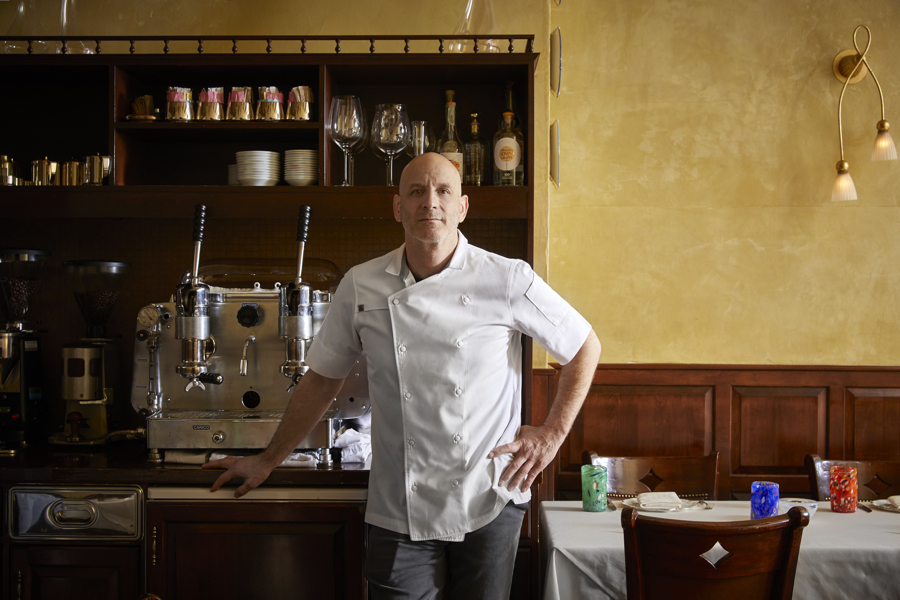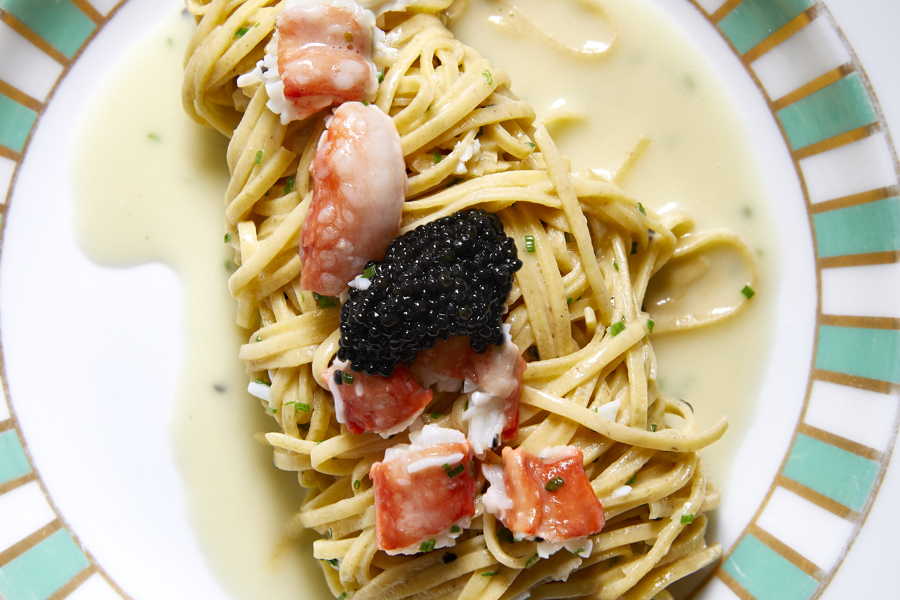Twenty Years Later: Vetri Cucina Reviewed
Marc Vetri redefined the boundaries of fine dining and Italian cuisine in Philadelphia. But as his namesake restaurant marks two decades, does it still deliver?
If you’ve done a fair amount of drugs in your life — if sometimes you drink a little too much or engage in any of the myriad forms of overindulgence to which human beings are so joyously prone — you will recognize like an old friend the moment of clarity that will hit you somewhere between the 12th and 13th courses, between the chewy almond tortellini in truffle sauce and the fanned slips of duck breast and chocolate-brown duck’s leg over chicory leaves. In that moment, surfacing briefly from a haze of luxurious, almost sybaritic excess, you will know you’ve had enough — that to indulge any more is to court disaster.
But you won’t be able to stop.
You have to taste the duck. Even if you can’t finish it, you have to taste it because it’s so pretty, so pink and bloody and smoky. And it smells so good. A tiny bite, at least. All salt and savor, the bitter astringency of the chicory as counterbalance. A dark sauce with a faint, gamy tang. One more bump, just because it’s there, you know? Because up to this point, everything has been so amazing that you just don’t want to miss what comes next.
You go into a night at Vetri with the best intentions — in a nice jacket, maybe, and ravenous because you’ve been starving yourself all day in anticipation. A drink is pressed into your hand the minute you pass through the door to the warm dining room, with its white cloths and chandelier. On the table, bread and olives before the menus are even laid down. Antipasti that is the very definition of how to do antipasti, because it’s so … plain. Just a bite of cured meat, some fried fennel fronds with parmesan, a quivering slice of mozzarella so fresh it’s still partly liquid, as warm as the tongue in your mouth, and a single small bite of foie gras on toast — slick and rich and fatty, like everything you’ve ever imagined the good life must taste like.
Then the menu — prix-fixe, ever changing, mutating in tune with the seasons, supply, the whims of a collaborative kitchen. The server explains that the meal will be guided by your desires, by what you like and what you don’t, and be full of surprises. This kitchen? This is what they do. They’re a fearless machine built for à la minute improv. It will be a dinner made just for you, at your pace, in accordance with your tastes. And you tell yourself: Cool. You’ll pace yourself. You won’t fill up on the bread that’s made every day, in-house, from flour milled right upstairs.
But you’re lying to yourself. Because when the courses start coming — the slice of tortellini pie stuffed with tiny meatballs and fresh ricotta; the beef tartare like a modernist sculpture with its tiny radishes and bonsai carrots; the bay scallops with fontina and the onion crepe wrapped around a core of truffle fondue — you eat it all. You clean every plate. Restraint was never a viable option. Not here. Not in this place that has become, in a very real way, a bold middle finger to everyone (myself included) who ever said that fine dining was dead. This is 1312 Spruce Street, after all — what used to be Le Bec-Fin before it moved to Walnut. This rowhouse — these walls, these floors — encloses the modern history of fine dining in this city. This is ground zero: where it all began.
In 1998, Vetri opened as an à la carte Italian place with nice tablecloths and a $50-a-head check average, a place where Marc Vetri, a kid from Abington who’d wanted to be a rock star when he grew up, set about showing a city soaked in a century of red gravy what it was like to really eat like they do in Italy — simply, seriously, and close to the land.
Four ingredients, not 40. That’s how he cooked, then and now. Meats done over open fires. Hand-rolled pastas made from his own hand-milled flour. Simple combinations like almonds and butter or persimmon and salt that evoke a sense of woodsy quiet or the first spark of summer. The Swiss chard gnocchi are made by compressing the greens until they’re almost a powder — then building them back up into a dumpling so soft and light that it seems made of nothing but ghosts and brown butter.
Vetri, today, transcends any discussions of good or bad. It’s beyond that — so thoughtful and so polished by time and repetition that it sometimes feels like the sole occupant of its own restaurant universe. When my onion crepe arrived burned, swear to God, it actually made me like the place more. The mistake was proof that at least the crew in back were actually human.
Twenty years in, this restaurant is as special as ever. And as the city has changed, so has Marc — sometimes driving the change, sometimes just following the tastes of the crowd, always with the understanding that with where his restaurant is now, every night has to be the best night.
Musing about age and evolution, Marc told me, “I have the same feeling now as when I opened.” That his restaurant is his house, that his customers are his friends, that hospitality matters as much as the food, the wine, the silver, the chairs, and that, in the end, all of this is supposed to be fun. He chuckled. “I don’t want to let anyone down.”
4 Stars — Come from anywhere in the country
Rating Key
0 stars: stay away
★: come if you have no other options
★★: come if you’re in the neighborhood
★★★: come from anywhere in the region
★★★★: come from anywhere in the country






